
History and technical information about juggling rings
Historical Evolution of Juggling Rings
Juggling, one of humanity's oldest performing arts, has captivated spectators for millennia with its blend of dexterity, rhythm, and showmanship. Among the various props adopted by jugglers over the centuries, the juggling ring stands out for its unique aesthetic appeal and technical versatility. Today, juggling rings are not only a staple of the discipline, but also a symbol of its continued evolution and innovation.
The origins of juggling rings date back to ancient civilizations. In 422 BC , the Greek historian Xenophon , in his work "The Banquet" , describes a woman skillfully juggling twelve hoops while dancing—a testament to the early use of ring-shaped objects in the performing arts. This historical account highlights the long-standing human fascination with manipulating objects in captivating ways.
Moving forward to the end of the 19th century , the Otto Maurer Catalogue of Fine Articles for Jugglers , published in the 1890s , featured illustrations of rings described as "very similar to plates." These props closely resembled the flat rings familiar to modern audiences, indicating a significant development in juggling equipment . In the 1930s , artists such as Angelo Picinelli popularized the use of flat rings, cementing their place in the juggler's repertoire and paving the way for future innovations.
Design and Features of Modern Juggling Rings
Modern juggling rings are typically about 32 centimeters in diameter and 3 millimeters thick . Their flat, circular design allows for smooth flight and ease of catching, making them ideal for complex tricks and large-number juggling routines. The simplicity of their shape belies the technical precision required to manipulate them effectively.
The rings' large surface area improves visibility , creating striking visual effects —especially under stage spotlights . This makes them a favorite among performers looking to captivate large audiences. The rings' lightweight design also contributes to their portability , an essential feature for traveling performers.
Benefits and Challenges of Juggling Rings in Performance
Benefits
- Visual Appeal : The flat design of juggling rings allows for impressive visual patterns and illusions . When spun or flipped , they can create captivating effects that balls or clubs cannot replicate.
- Technical Versatility : The rings offer a wide range of tricks , including rotations , flips , and complex passing routines . Their shape allows for unique manipulations, such as rolling them over the body or interconnecting them during performance.
- Portability : Due to their lightweight and slim profile , the rings are easy to carry , making them convenient for jugglers who travel frequently for performances.
Challenges
- Hand Comfort : The thin edges of the rings can be rough on the hands, especially during extended training sessions or when catching multiple rings at high speed. This can lead to discomfort or even injury if proper technique is not used.
- Wind Sensitivity : Rings are more susceptible to wind interference than balls or clubs . Outdoor performances can be particularly challenging, requiring the juggler to adjust their technique to compensate for environmental factors.
Innovations in Juggling Ring Design
Over time, manufacturers and jugglers have sought to address these challenges through innovative designs:
- Edge Dampeners : Introduced by jugglers like Ernest Montego , edge dampeners are additions to the rim of the ring that soften the impact on the hands. These dampeners reduce discomfort during catches and allow for longer training sessions without tension.
- Flexible Rings : Some modern rings are made from elastic materials , allowing jugglers to manipulate them in new and creative ways. Flexible rings can be twisted and deformed during performances, adding a dynamic visual element and expanding the repertoire of possible tricks.
In-Depth Analysis of Modern Juggling Rings from Top Brands
The contemporary juggling community has witnessed significant advancements in ring design, catering to diverse styles and preferences. Two prominent brands— Play Juggling and Mister Babache —exemplify this evolution with their popular designs.
Play Juggling 32.7cm Rings : Features and Benefits
Play Juggling has recently redesigned its 32.7cm rings , representing a leap forward in quality and performance . By using a new hot chamber injection mold , the company has improved the overall finish and functionality of the ring.
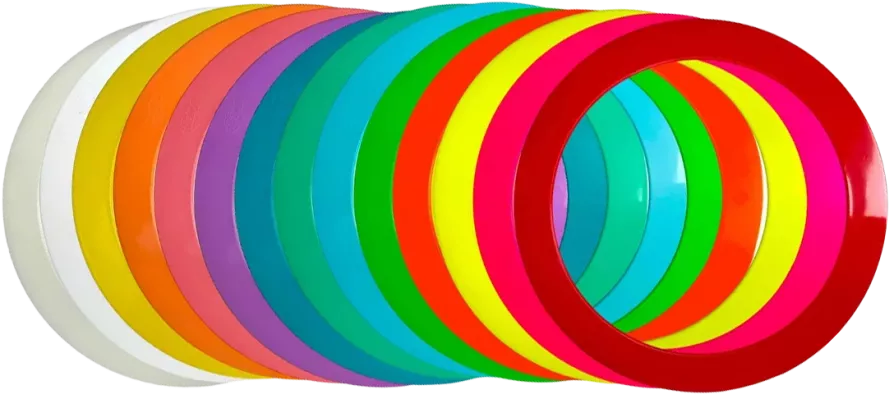
Key Features :
- Thinner Edge : The updated design features a thinner edge , reducing strain on the hands and making the rings more suitable for large number juggling involving five or more rings .
- Improved Finish : A smoother , more consistent surface improves handling and durability .
- Specifications : The rings have a diameter of 32.7 cm and weigh 110 grams .
Target Audience :
These rings are particularly popular among technical jugglers who seek precision and performance in advanced tricks. They also appeal to performers who prioritize a polished, professional appearance in their routines.
Mister Babache 's 32 cm Rings : A Classic Choice
Mister Babache's 32cm rings have retained a classic design over the years. While they lack some of the recent improvements seen in other models, they remain a reliable choice for jugglers of varying skill levels.
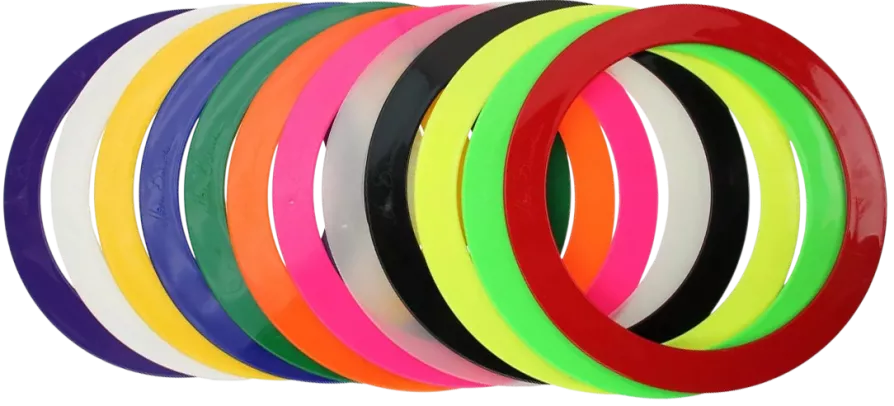
Key Features :
- Durability : Designed to be sturdy , these rings are suitable for both beginners and professionals .
- Variability : Some users have noted slight differences between individual rings, potentially due to inconsistencies in the manufacturing process.
Target Audience :
Ideal for jugglers who appreciate a traditional design and care less about the latest innovations, these rings serve as a solid option for casual practice and beginning performers .
Play Juggling 's 40cm Saturn Rings : Innovation in Design
Play Juggling 's Saturn Rings stand out for their innovative design , aimed at contemporary jugglers who prioritize creative manipulation and visual impact .
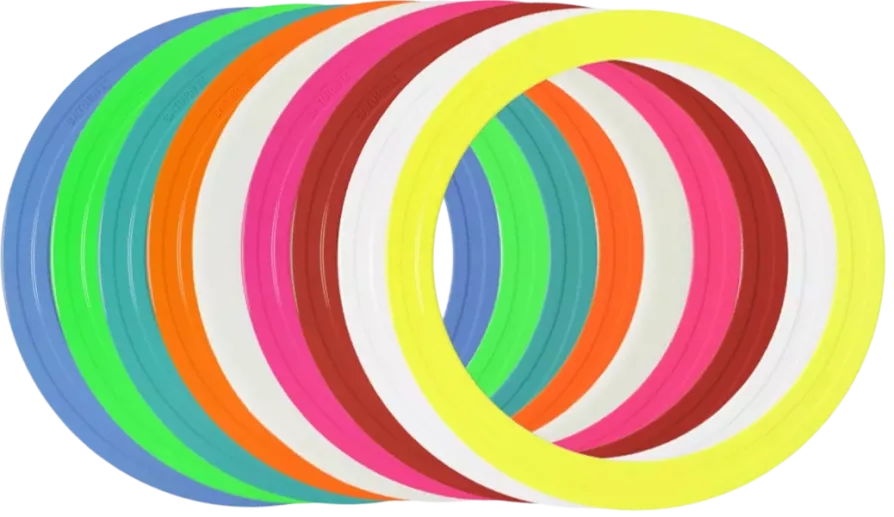
Key Features :
- Elastic Material : Flexibility allows for dynamic manipulation, including bending and deforming the rings into different shapes during performances.
- Wider Profile : A wider body improves stability and accuracy , although the thinness can cause slight wobble at high speeds.
- Improved Stability : Design improvements have significantly increased stability over previous versions.
Target Audience :
These rings are ideal for jugglers interested in pushing the boundaries of their art, especially in styles that emphasize creativity and innovation .
Mister Babache's 40cm Giant Rings : Professional Performance
Mister Babache's giant rings continue to be a favorite among professional jugglers , especially those who perform with five or more rings .
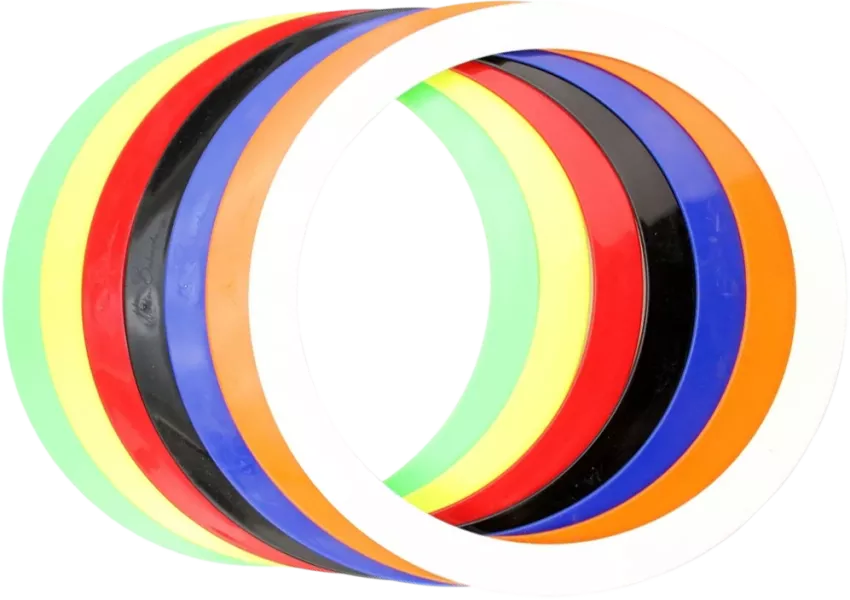
I came across this English video about Babache rings and I found his comments to be relevant. What he says about the rings looking new and shiny applies to all models and brands.
Key Features :
- Rigid Design : Made of sturdy plastic , they provide stability and minimal wobble, even during complex multi-ring tricks .
- Consistent Performance : Their solid construction makes them reliable for technical juggling where precision is paramount.
Target Audience :
Favored by jugglers who prefer traditional techniques and value stability over flexibility, these rings are especially popular for stage performances where reliability is crucial.
Comparison of Large and Small Juggling Rings
The choice between larger (40 cm) and smaller (32 cm) rings depends on the juggler's style and the context of the performance.
Advantages of larger rings :
- Provide excellent visual impact , making them ideal for stage performances and audience engagement .
- Suitable for contemporary manipulation techniques .
Bigger Ring Challenges
- Require more energy and space to juggle.
- Require greater precision due to their size.
Advantages of smaller rings
- Easier to control and less physically demanding.
- Ideal for large number juggling and technical routines .
Smaller Ring Challenges
- May lack the striking visual presence of larger rings in a performance context.
Selecting the Right Juggling Rings for Your Style
Choosing the appropriate juggling rings is essential to achieve the desired performance result:
- Technical Jugglers : Those focusing on complex tricks with multiple rings might opt for Play's 32.7cm rings or Mister Babache's giant rings for their precision and reliability .
- Contemporary Performers : Jugglers incorporating dynamic shapes and innovative manipulations may prefer Play's Saturn Rings for their flexibility .
- Beginners : Mister Babache's classic 32cm rings offer a reliable starting point for those new to juggling.
Conclusion
From their ancient origins to the modern stage , juggling rings have undergone significant transformations, reflecting the evolving nature of the art itself. Innovations in design and materials have expanded the possibilities for performers, allowing for greater expression and increased technical prowess. Whether aiming for the impressive spectacle of large rings or the intricate dance of multiple smaller rings , today's jugglers have more options than ever to elevate their craft .
As the juggling community continues to push the boundaries of what is possible, the humble ring remains at the heart of this creative exploration— twirling , flipping , and rising through the air as a timeless symbol of human skill and ingenuity.
For those interested in delving deeper into the world of juggling rings , engaging with other artists and experimenting with different designs can provide valuable insights and inspiration. The right set of rings, tailored to your unique style and goals, can transform your juggling journey and captivate audiences worldwide.
Comments
GIANT Mister Babache ring 40cm
Mister Babache ring. More aerial. Appreciated by experienced jugglers.
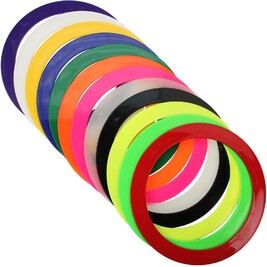
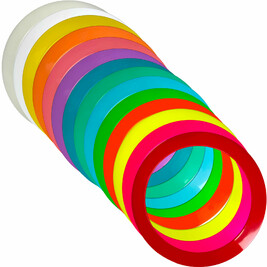
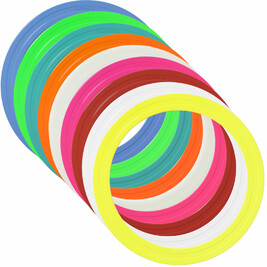
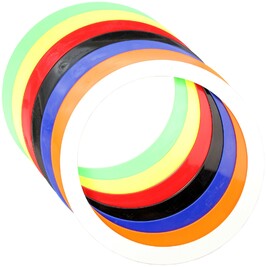
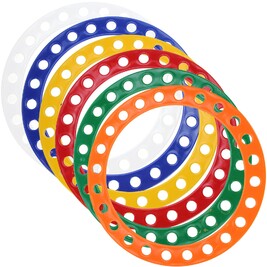

Great article, thanks for the content